| City/Town: • Cache |
| Location Class: • Amusement |
| Built: • 1957 | Abandoned: • May 13th 1985 |
| Status: • Abandoned |
| Photojournalist: • Billy Dixon • Johnny Fletcher • Jennifer Burton • Leslie Flaming • Emily Cowan |
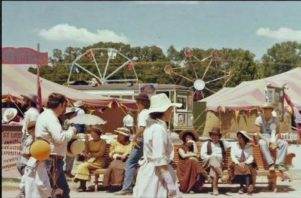
Herbert Woesner began with a vision of a family fun amusement park and after nearby Craterville Park closed due to Fort Sill moving onto the land there was a need for one too. He was a farmer at the time and was having trouble getting a loan from the bank in order to buy the rides. Only when he offered up his cattle as collateral did he receive the loan. And with that his career started as a part-time farmer and amusement park owner. This became Eagle Park, small in comparison but grand for the small town of Cache, Oklahoma. The sign came from an old Burger Chef restaurant in Wichita Falls, Texas, and was brought to Cache and repurposed to advertise Eagle Park. The Park would be open from Easter Weekend to Labor Day in September making it an attraction that families from all of the surrounding towns utilized every summer.
Amongst the rides of Eagle Park sat the Quanah Parker Star House, Lawton Frisco Depot, and a log cabin from Fort Sill to name just a few of almost 20 buildings on the grounds that created a small historic town. “He didn’t have children, those buildings were his babies. He didn’t collect stamps or something he collected old buildings. He hated buildings going to waste and he wanted to save them” remembered Ginger Seibold of her uncle. They had what was known as the Original Red Store where you could buy curios and souvenirs such as turquoise jewelry, rabbit pelts, clay pottery, candy, and various Indian merchandise.
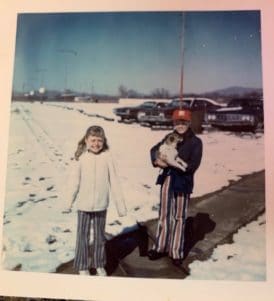
Ginger Seibold (part owner) who grew up on the park remembers her time working there as a young girl, “It was my front yard as a kid and the skating rink was where I learned to walk-on skates. I had the childhood most kids dream of amusement rides and a skating rink just out our front door. It was a great place to grow up and work together as a family in our small business. I was taking care of three separate money boxes working the concession stand, renting out and fixing skates, and selling tickets at 10-years-old. I would have to climb up onto a five-gallon bucket onto an ice cream box that we used to sell ice cream bars out of to make the cotton candy because I couldn’t reach. I would make hot dogs, french fries, and chili on a hot plate. We sold soda for 25 cents and hot dogs for 50” she said. “One of my favorite memories was we would help close the park and then come up here to the Trading Post Cafe and help them close as well and we would eat cornflakes with a banana on top or scrambled eggs in the microwave as dinner because we didn’t want to dirty anything up. It would be super late and that’s when my dad would just get so funny and I just enjoyed the family time and being silly.”
Wayne Gipson Jr. (part owner) also grew up at the Park and started working the miniature gold attraction when he was 6-years-old and then worked his way up to operating rides. “There used to be so many people, we would be so busy and I loved getting through the long line of people and getting everyone on the ride,” continued Wayne, ” I thought this was what I would be doing all of my life was running Eagle Park. I never really thought life would be this different.”
Rides/Attractions
Livery Stable and Saddle Horses
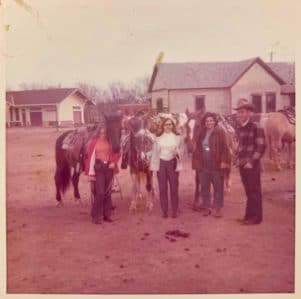
Horseback rides cost $1.00 per hour and were a popular attraction because you could take the horses wherever you wanted around the park and down to the nearby creek. It was something almost everyone did at least once and many that continued to do every time they visited the park. “Like all little girls, my heart beat for horses so dad took me to Eagle Park to ride on a regular basis. Can you believe it only cost a dollar an hour! On my birthdays, $5 paid for an all-day ride. Charlie was my favorite horse, slow and gentle for a young girl, and we quickly bonded as friends. My favorite outing was packing a picnic lunch for Charlie and me. I had sandwiches and pickles, and he munched apples and carrots.” remembered Linda Ford. Some of the horses went by the names of Charlie, Big Red, Pepper, Star, and Duke.
Ven-Am Research Center
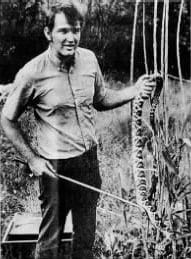
Frank Bryce opened the Ven-Am Research Center in 1959 just two years after Eagle Park came into existence when there was just a merry-go-round and the skating rink. It was an educational attraction that taught how to care for and handle animals, and most popularly the handling, and care of the numerous venomous snakes in the collection. They housed over 130 snakes venomous and nonvenomous, being the largest venomous snake collection in the state and region, 2 alligators that had their pool, various species of lizards including a group of Gila Monsters that they attempted to breed but weren’t successful. The last Gila Monster originally from Eagle Park died in January of 2020 after 48+ years in captivity making it one of the longest living specimens of its kind. In its life span it educated elementary, high school, and college students as well as wildlife and government organizations spanning five states. Amongst the species of snakes were Saw-scaled Viper, Gaboon Viper, Mole Viper, European and Puff Adders, Coral snakes, and Boomslangs. Lizard species ranged from small to large including Gila Monsters, Iguanas, Tegus, Chuckwallas, Monitors, along with native lizard species that were often rescued and relocated. Frank stepped away from the Ven-Am Research Center to pursue a career in U.S. Fish and Wildlife Services, which led to its ending in 1978. “Twenty years of my life was spent at Eagle Park. Just having the opportunity to handle snakes from all over the world.” continued Frank Bryce “Because of Eagle Park I had the chance to work with venomous reptile experts from all over the world. It paved the way to a super fun career with the U.S. Fish & Wildlife Service.” He went on to become chief of the public use and refuge planning division for the southwest region of the Fish and Wildlife Service. Most of the reptiles from the collection were purchased by Bob Jenni, a wildlife celebrity and herpetologist. Frank kept a select few reptiles including 4 Gila Monsters, one of and a few venomous snakes. Dennis Parmley who used to work at Ven-Am went on to become a Fishery Biologist for 8 years and then become a professor at Georgia University to teach herpetology. He also began to successfully breed Gila Monsters.
Little Dipper & Wild Mouse
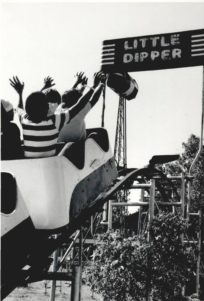
The Little Dipper was a small kiddie roller coaster brought to Eagle Park from Kiddie Land in Lawton in the mid-’60s. The Wild Mouse was supposed to be one of the star attractions at Eagle Park, a true roller coaster for the older kids it was purchased used and brought to Eagle Park. The B.A. Schiff & Associates manufactured roller coaster was made up of two Wild Mouse coasters so that they would have needed parts throughout the years. One was from Texas and the second came from Doling Park in Springfield, MO. Wayne Gipson and Ginger Seibold who are the current owners, father was working on The Wild Mouse roller coaster when he fell, suffering fatal head injuries. The Wild Mouse never became operational.
Other attractions included miniature golf, carnival rides like The Bullet, Tilt-A-Whirl, Ghost Mine, bumper cars, boats, carousel, and arcade games. “The kids from town packed the place and I would go there to spend a few of my quarters to play some pinball.” continued J. Wade Harrell “I remember the extra-wide Superman machine we would try to beat on warm summer evenings before I made my trip back home before it got too dark.” There were two Ferris Wheels for the older kids each had around 8 or 9 carriages and one kiddie Ferris Wheel that had about 5 to 6 carriages.
Roller Skating Rink
The roller skating rink was another very popular attraction at the Park. Made using a concrete base with a self-leveling liquid plastic over it that hardened after drying that was green. Many went every weekend just to skate often to the point of getting blisters on their heels. It was $1.50 to skate all day, there were rent-able skates and ones that could be sold as well. It was the start of many love stories like Ken and Susan Handy, “Susan (Irwin) and I met for the first time in 1970 at Eagle Park skating rink, Cache, Oklahoma. We were introduced to each other by Susan’s best friend, Robbin Lake. Robbin liked me and I was interested in her. Susan did not like me at all. She said I was stuck-up, arrogant, and self-centered. After that night we did not see each other for about two months. When we did see each other again, I was talking to Robbin at the time. Susan was putting her skates on, I went on the skate floor and at that point, Susan says, she fell in love with me. Susan and I were married four years later on January 11, 1974, in Lawton, Oklahoma. I was 18, Susan was 17. We are still married today. If it were not for Eagle Park, we would not be together. Susan and I went skating at Eagle Park every Friday, Saturday, and Sunday.” After the rodeo shows at around 9 p.m. the rink was used for the rodeo dances, local cowboys from all surrounding towns would come out to line dance the night away until around 2 a.m. when they ended.
Historic park burned by lightning Sapulpa (Okla.) Herald, Sunday, June 14, 1998.
Cache- A fire apparently triggered by lightning destroyed two buildings at the old Eagle Park amusement center, authorities said. A skating rink-ghost mine and the former Ven-Am Research Center that was later turned into an arcade and fun house were destroyed by the fire that started around 1:30 a.m. Thursday, authorities said. Park owner Herbert Woesner said the skating rink and the reptile house were built in 1961 and bumper cars and the Ghost Mine were added in 1964. The buildings were being used for storage. One firefighter was overcome by heat and treated at the scene during the blaze that burned until early morning. Investigators weren’t sure if lighting struck the park and triggered the fire or if it hit a transformer that sparked onto the buildings.
Rodeo Arena
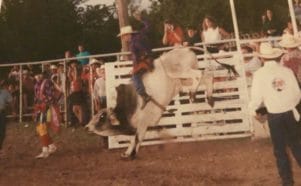
Starting in the 1970s rodeos became a highlight of Cache culture at Eagle Park. There would be 3 rodeos held a year, in May would be the annual Cache FFA Rodeo which died out around 1983, and on the 4th of July the rodeo would be hosted by Cache Round-Up Club up until around 1987. On Labor Day Weekend would be the Frontier Days festivities that included a parade, rodeo, and a Wild West Shootout. The Chili Cook-Off Rodeo that started in the early 1980s was put on by the International Pro Rodeo Association. Cache Frontier Days was hosted at the Park and would bring in thousands of people from all over to enjoy the festivities, in 1988 crowd numbers surpassed 25,000 people. The Frontier Days Rodeo was an open event and featured bull riding, barrel racing, bareback bronco riding, calf roping, and team roping. Admission was $8-10 for adults and $4-5 for children. The event included junior events like barrel racing and peewee bull riding. Cindy Gilbert Nickell attended one of the rodeos the summer she turned 8 years old. “It was so hot and muggy, my cotton candy melted before I got back to my seat. They carried out the first three riders and each was taken by ambulance to the hospital. Not one animal was ridden.” Marvin Crabtree was the announcer for all the rodeos at the Park, “he would always say “take a deep seat and a long look” before the gates would open in the area. I would always take him a Coke he would say, “Boy I sure am thirsty” and that would be my queue to go take him a Coke and I would feel so important” said Ginger.
Family Events
Chili Cook-offs
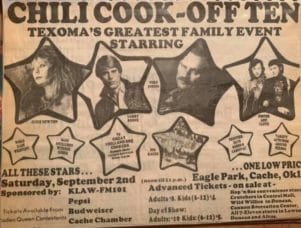
The Chili Cook-offs held at Eagle Park were one of the more popular events starting in the early 80s and the last one being held in the early 90s, continuing after the park closed. There was live entertainment, with headliners like Reba McEntire, Brooks & Dunn, Mark Collie, David Allan Coe, and many other famous artists. Sometimes they corresponded with a theme such as Jailhouse Chili 1984 and Safari Chili 1985. Over the years more and more cooks would show up to have their chili taste-tested by a panel of judges to see who would be crowned the best of the best with the Chili Cook-off of 1989 bringing out 75 cooks. Wrestling and pig races were put on to get the crowd going and kids went wild on the rides. “The night the Nitty Gritty Dirt Band played at the cook-off, they came on stage and started singing Fishin’ In The Dark and all of the stage lights went out. Without missing a beat Jeff Hanna yelled, “Well guess tonight we’ll be singin’ in the dark.” About ten minutes later they did get the stage lights back on.” said Mike Dudley who attended the show in the summer of ’87.
Bluegrass Music Festival
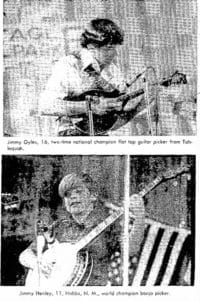
Southwest Oklahoma Street Rod Car Show
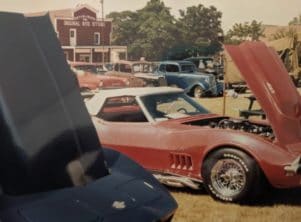
The annual car show was held at Eagle Park from 1982-1985 put on by the Southwest Oklahoma Street Rod Association. In 1982 the first year had around 52 participants and with every year after that attendance doubled. A two-day event on Saturday and Sunday usually at the end of May. On Saturday with the show included a picnic during the day and a dance that night. Everything from Corvettes, street rods, custom cars, and trucks, were in the show and a Peoples Choice Award was presented at the end. During the event, there were games held that included a spark plug change contest, wheel barrel race, and target race. The show was moved to Sultan Park in Walters, OK in 1986 because there was more space.
Other
An annual Fourth of July firework show was held in the field nearby. They would start after dark with the Gipson family setting off a huge display and then everyone bringing their own fireworks as well that ended around 11 pm. “My parents took us to Eagle Park all the time, my favorite memory being on the Fourth of July. We would ride all the rides, get cotton candy, and then all of the cars would park in a big circle while people set them off.” Raenae Choat Phillips reminisced. The family-oriented atmosphere at the Park often brought together family reunions that met there yearly. Picnics, school club meetups, and end of the year field trips were something that the students looked forward to all year. As well as powwows and the Quanah Parker Reunion were held here. It was a place that brought people together and united the surrounding communities for the 28 years that it was in a functioning amusement park. Ginger remembers as a kid getting up early in the morning after the events to go out on the trash truck that their dad had made for the park to help clean up the aftermath of the festivities, “it was just part of it we would just clean up after the fact and get ready for the next event” she said.
Films
Charge of the Model T’s
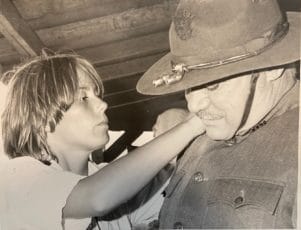
Also filmed partially at Eagle Park using some of the historic buildings for the set, Charge of the Model T’s is a comedy that was released November 4, 1977, by Jim McCullough Productions. The plot depicts a German soldier who hires a band of Mexican bandits to attack the Stonewall Farm. He plans this so the Americans will have no choice but to send more troops to Texas instead of Europe.
I caught up with Karen to get her experience of working on set with the cast of Charge of the Model T’s.”I was on summer break from my first year of college (Indiana University) when I heard they were planning to film a movie, Charge of the Model T’s, in the Lawton area. I had been actively involved in the Ft. Sill Cabaret Theatre for four years: building sets, running lights, and stage managing several productions a year. A couple of male friends (soldiers) who I knew from the Cabaret wanted to work on the crew as they were just getting started with pre-production work, building the sets. We each applied for a job. Both of them were hired and I was not. Of course, I thought this was greatly unfair, being a woman, I felt discriminated against. I tracked down the head carpenter on location in Eagle Park and tried to persuade him to hire me. He had been in
the business for many years and had never hired a woman to build sets.
It just so happened I was working a show at the Cabaret and several of the movie executives were in the audience that same evening. I had designed the lighting and was the stage manager. After the show, I introduced myself to the production assistant and told him about my experience earlier that day. I explained that I was as capable as any man they hired locally. Lastly, I got on my knees and told him that if I didn’t exceed his expectations that he could fire me, but at least give me a chance. He laughed and hired me on the spot!Now, I had to prove myself to the production assistant, head carpenter, and the rest of the male crew. After a week of building facades, a huge water feature, and several other structures, I was promoted to supervising a crew of five local guys. As we were finishing most of the structures that needed to be built, filming began on the movie. A week into the filming, the head of the props department, a husband and wife team, quit and headed back to Los Angeles. I was asked to step into the role for the duration of the filming. I drove a U-Haul truck full of movie props to locations at Eagle Park, Ft Sill, and the surrounding areas. I was given the script, the shooting schedule, and all changes as they occurred. My assistant and I were on set each day and made sure the actors had their props. Since this was a period piece and there were soldiers in it, I was responsible for signing out vintage rifles to the actors. Luckily, all of the props had been acquired before I took over and my job was managing them each day. It was a lot of work, but so much fun!!
I came to know the actors since I worked with them for a couple of months. Several were well-known, veteran actors including Louis Nye, Arte Johnson, Herb Edelman, John Doucette, Bill Thurman, Louisa Moritz, Terry Wilson, and Pedro Gonzalez Gonzalez.There are many great memories of working side by side with the cast and crew each day. I’ll never forget the day we were shooting at a house in the middle of nowhere. It was a major scene and many of the main actors and extras where there. Bill Thurman was riding a horse at a gallop and fell off of it. We all rushed to him. He was having problems breathing, one of his lungs had collapsed, so I grabbed an oxygen canister from my truck and gave him oxygen until paramedics arrived via helicopter. After that day, every time he saw me, he recounted how much it meant to him that I helped him and kept him calm by telling him everything would be fine. One thing I learned about filming movies is that they don’t film in sequence and that the inside of a scene can be miles away from the outside.
When the film wrapped, we had a huge party. I was given a copy of the book and most of the actors and crew members wrote a personal message inside like a yearbook. The production assistant who hired me wrote, “Ah, I remember that fateful night at the Cabaret Theatre when I gave you “a chance” to do the film. I must congratulate myself on the wisest choice of my film career. Thank you ever so much.” Steve Sassen. Filming ended just in time for me to head back to school. I received an invitation to the premiere that took place in Lawton.”
Fast Charlie… the Moonbeam Rider
Fast Charlie… the Moonbeam Rider was filmed at Eagle Park in July and August of 1977 and released on May 1, 1979 by Universal Pictures. Starring David Carradine and Brenda Vaccaro, the comedy plot was based in the 1920s when a World War I veteran by the name of Charlie races to be the first to win a transnational motorcycle race. Along the way Charlie picks up a woman and her son which leads to adventure and romance on his transnational race.
Ronald Moss had quite the story of being on set, “I have very fond memories of being on the set of Moonbeam Rider. A great deal of time was spent setting up scenes, pacing out the action, and sometimes running through lines. If you were asked to be in a scene as an extra, you were sent to wardrobe where they outfitted you in appropriate period clothing. Scenes were blocked, instructions were then given, and the scenes were shot, usually several times. It could take hours to get one scene correctly filmed.
My job as a stand-in was to walk the scene as lighting and camera angles were set and reset before the actual filming. Then Mr. Carradine would come on set and run the scene. I remember a scene we were blocking when David Carradine scooped me up, cradled me like a baby, and carried me around the set as he walked through his steps. I weighed 180 pounds and he did this with little effort. Strong guy. David Carradine was very natural, not snobbish, and easy to talk to. Brenda Vaccaro was quite the opposite. Neither was she approachable nor interested in speaking with any of the extras. I was disappointed by her actions. All the supporting actors were very friendly and often told stories to us locals about their careers and acting experiences. Terry Kaiser was my favorite. He was as funny off-camera as on. Since there was a lot of downtimes while you sat waiting for something to happen, you had lots of time to talk to the cast members.
I remember the day they shot the county fair scenes. It was hot and hectic with a great deal of action going on at the same time. As an extra, you wanted to avoid having your face filmed so that you could be in several scenes. You were even given the opportunity to ride on one of the hot air balloons if you wanted to. You might shoot a scene, then quickly run to wardrobe for a costume change, come back to where they were shooting, and then be in the next scene. At the end of each day, you stood in line at the payroll counters and got paid in cash for a day’s work. There were days when I worked as a stand-in and an extra. I was paid for my hours as a stand-in in addition to a full day’s wages as an extra. It was great summer work for a teacher.”
American Pickers Episode
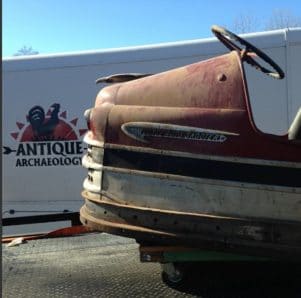
American Pickers came to Eagle Park two different times. One in the episode London Calling where Danielle and Mike’s brother Robbie bought the twelve bumper cars out of storage along with parts. The next episode was Pick or Treat when Mike and Frank went to the park they looked around the rest of the grounds of the amusement park to try and save some items. They bought two Coca Cola button signs, a few other signs, and some airplane pedal cars.
Closing
Two years before its official closing the family had gotten word that the tort laws would be changing making insurance prices go up because of liability risk. “Fall of 1983 we got word that the change in law was coming but we didn’t know why or what to do about it. When we got home my Uncle Herbert and I called our insurance company to ask them what we were gonna do or how this would affect us and they said don’t worry about it you’ve been a good customer so we’ll insure you. Then in 85 three weeks after we opened an inspector from the insurance company came out and in less than a week we got a letter saying we would not be insured after thirty days. It was gonna be five times what we were paying. ” said Wayne Gipson Jr. of Cache. “We were stuck between a rock and a hard place, Herbert’s mentality was that if you gave kids $5 they could be there all day, rather than up the price we made the unfortunate decision to close” Ginger said. The hope now for Eagle Park is to raise funds and volunteers to help preserve and restore the historical buildings on the property and make it a walk through park that visitors can photograph and learn.
EAGLE PARK IS ON PRIVATE PROPERTY TO GET PERMISSION GO TO THE TRADING POST OR CALL (580) 429-3420 TO SET UP AN APPT.
Gallery Below of Eagle Park
Special thanks to Ginger Seibold and Wayne Gipson, Frank Bryce and Dennis Parmley (Ven-Am Research Center), Penny McDowell Wilson (Rod Run Car Show pictures), Karen Weber-Millstein (Charge of the Model T’s pictures),Ronald Moss (Moonbeam Rider), Faron Griffin (Rodeos pictures), Paula Sharry and Dina Slusher Seward (Frontier Days pictures), Robert Gatliff (ride pictures), Randy David Somerlott (Chili Cook-off pictures), Tina Wilks Ballard (Newspaper clippings),Dan Collier, Cindy Gilbert Nickell, Rhonda Jordan, Linda Ford, Ken and Susan Handy, Fonda Morris Smith, Ranae Choat Phillips, Mike Dudley.
“9 Sep 1965, Page 28 – The Lawton Constitution at Newspapers.com.” Newspapers.com, www.newspapers.com/image/22335226/?terms=eagle%2Bpark%2Breptile&match=1.
“Charge of the Model T’s.” IMDb, IMDb.com, 4 Nov. 1977, www.imdb.com/title/tt0078953/.
“Fast Charlie… the Moonbeam Rider.” IMDb, IMDb.com, 4 May 1979, www.imdb.com/title/tt0079137/.
Brewer, Graham Lee. “Last Comanche Chief’s Home Continues to Crumble.” Oklahoman.com, Oklahoman, 21 Oct. 2016, oklahoman.com/article/5523496/last-comanche-chiefs-home-continues-to-crumble.
“12 Jun 1975, Page 27 – The Lawton Constitution at Newspapers.com.” Newspapers.com, www.newspapers.com/image/22904155/?terms=bluegrass%2Bmusic%2Bfestival%2Beagle%2Bpark.
“13 Jun 1975, Page 28 – The Lawton Constitution at Newspapers.com.” Newspapers.com, www.newspapers.com/image/22904948/?terms=bluegrass%2Bmusic%2Bfestival%2Beagle%2Bpark.
“13 Jun 1975, Page 29 – The Lawton Constitution at Newspapers.com.” Newspapers.com, www.newspapers.com/image/22904967/?terms=bluegrass%2Bmusic%2Bfestival%2Beagle%2Bpark.
“30 Jun 1974, Page 1 – The Lawton Constitution at Newspapers.com.” Newspapers.com, www.newspapers.com/image/31214705/?terms=bluegrass%2Bmusic%2Bfestival%2Beagle%2Bpark.
If you wish to support our current and future work, please consider making a donation or purchasing one of our many books. Any and all donations are appreciated.
Donate to our cause Check out our books!

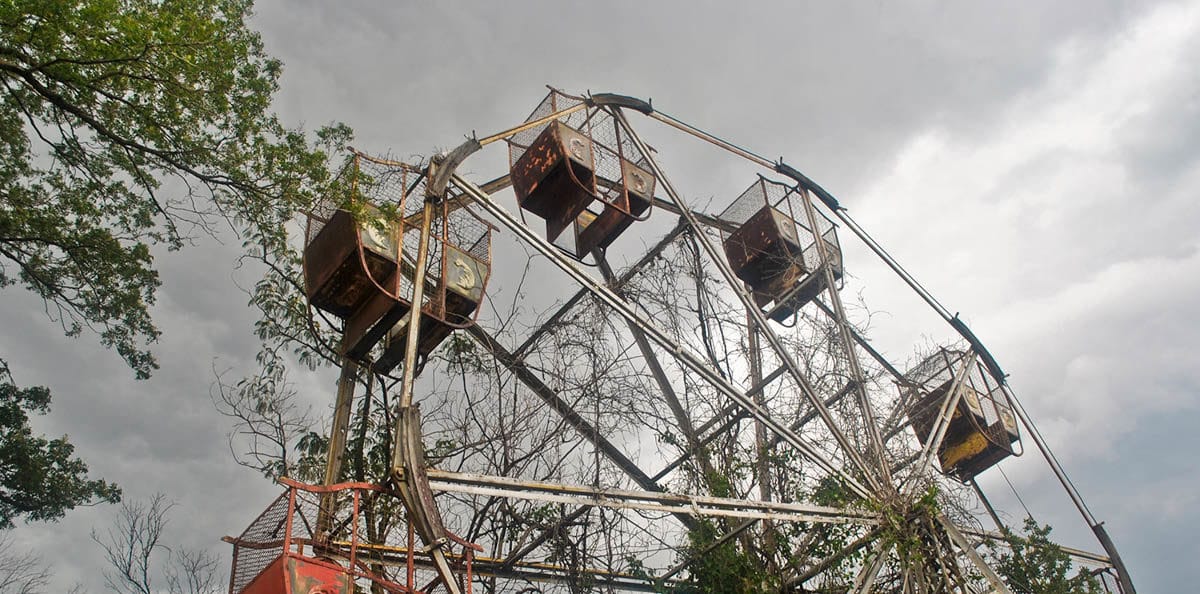
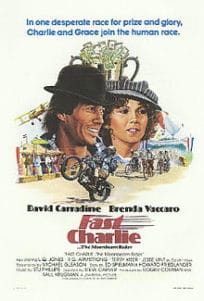











































































































































































I was at the Chili Cookoff when Shelly West preformed. She got the call on stage her mother Dottie West had just died. She took a short pause and finished her set. Everyone was overcome with her dedication to her fans. We all in unison relayed our condolences ❤️
[…] remained under Laura Birdsong’s ownership, it was then sold to Herbert Woesner and moved to Eagle Park in Cache, […]
I got married in 1962 and was never back at Eagle Park after that. our church group of teens a few pre teens went there every summer after it opened I guess in 1957 I remember the skating rink was my favorite place to go and we rode horses but I don’t remember rides. It was a fun time, a fun place.
Very interesting article and those pictures are priceless.
When stationed over at Altus from 1978-1983, I created historical tours of southwest Oklahoma. Of the 80 or so tours over a two-year period of time – we probably stopped at Eagle Park all but a handful of times.
I don’t even recognize Frank Bryce from this picture, but he was my mentor when I volunteered at the Refuge in the early 1980s as a tour guide. I still keep in touch with him as he heads a animal shelter in a southwest US state.